It’s the first movie to get to grips with underwater motion-capture, and diving hotshot JOHN GARVIN has spent the past four years co-ordinating all the scuba and freedivers who helped create the illusion. As Avatar: The Way Of Water hits our cinema screens at last, he tells Steve Weinman about his debt to ‘slow-burn’ British dive-club training, the secret of those movie-star breath-holds, and why divers in particular will appreciate ‘James Cameron’s love-letter to the ocean’
John Garvin had written to tell me before our Zoom that more than 200,000 dives had gone into making what he described as “the biggest, most complicated diving movie ever made”. What? I assumed that he must have rolled in a few extra zeros by mistake.
The thing is, the Supervising Master Diver for Avatar: The Way Of Water – he has trouble remembering his fancy title when we get to speak, but it means Dive Co-ordinator or, I guess, Top Diver – can’t afford to make mistakes. And if 200,000 dives were completed, and with nothing more than a few minor scrapes along the way, that tells its own story.
“I wish I had put too many zeros into that number,” says Garvin ruefully from Australia. “That 200,000 includes the number of freedives, which were notoriously difficult to log because some of them took 30 seconds to a minute while others were consistently longer.”
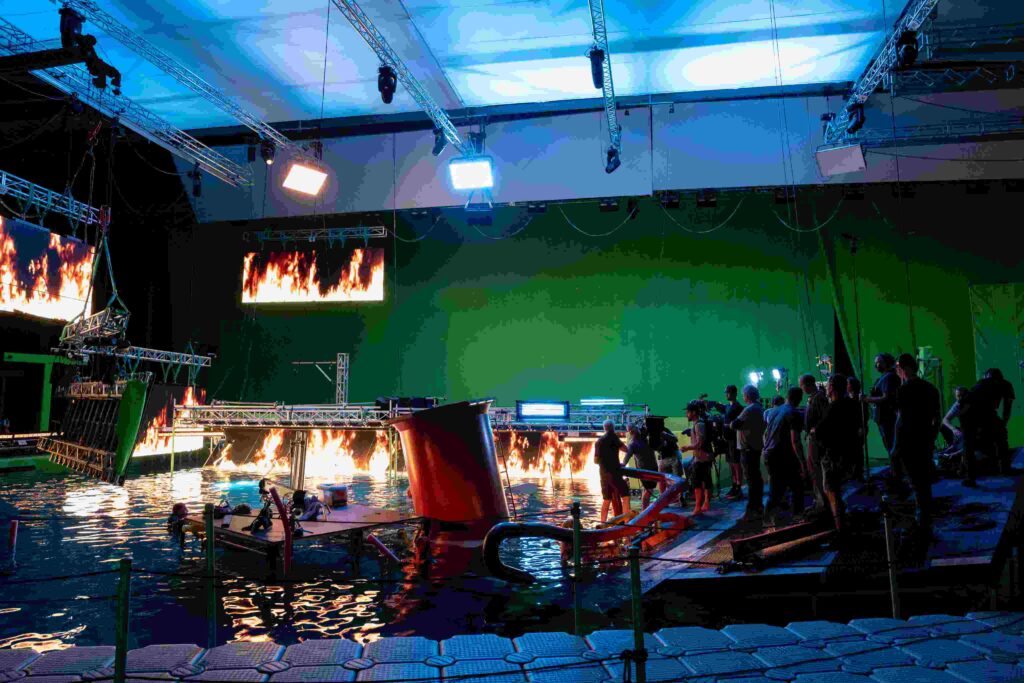
With a typical 26 scuba and freedivers in the water at once on a busy shoot day – “like yo-yos basically, up and down, up and down” – it was an almighty challenge to keep track of everyone working in the tanks, especially the lighting and grip divers, forever submerging to tweak something and return.
Garvin’s daunting task was to co-ordinate a dozen separate dive-teams, each with their own ways of doing things. “The largest was the grip department, traditionally responsible for building the sets, structures, lighting systems and so on. The lighting department again consisted of four or five divers, and there would be another four or five safety divers on any given day.
“You had smaller teams like the underwater camera department – typically with the underwater DoP [director of photography] and his assistant in the water – and the underwater stunt department. Then you had the underwater actors, and some new roles had to be created, including technicians to calibrate and maintain the underwater motion-capture system.

“So any kind of formalised dive-logging was a nonsense, and we had to take a more commonsense approach: log when the divers entered the water and use the Tasmanian dive-tables to keep track of nitrogen-loading. In the tanks we used, that allowed pretty much unlimited bounce-diving, as long as the ascent-rates were looked after. Of course, the key was dive-computers and the use of nitrox.
“So what I did to get that number was take a snapshot of a couple of typical weeks and extrapolate that to the four years that we were shooting in total.” It’s a six-figure wonder.
Breath-holds on scuba
When the original Avatar came out in 2009 it became the highest-grossing film in history, its $2.8 billion take beating the 12-year record held by a previous James Cameron film, Titanic. Now, after an extended wait, we’re being taken back to the forest moon Pandora, but this time exploring its more watery side.
Sam Worthington and Zoe Saldaña return as Jake Sully, now head of the Omatikaya clan, and his wife Neytiri. They are parents of five, trying to keep their family together as refugees in the face of human aggression and heading for the water-world of the Metkayina clan, led by Ronal (Kate Winslet) and Tonowari (Cliff Curtis).
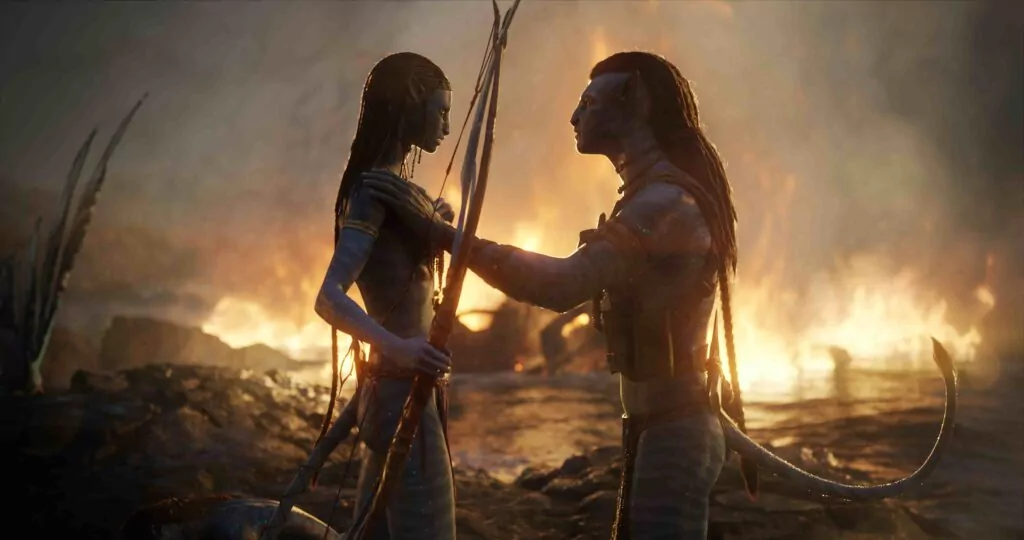

Portraying the Metkayina’s marine environment convincingly would not have been technically possible 13 years ago. Underwater motion-capture has long been a holy grail for film-makers, especially for an ocean-obsessive like Cameron, but the biggest challenge was this: how do you eliminate the bubbles?
“Most people are familiar with motion-capture – actors wear a series of sensors on their body that are picked up by the infra-red cameras,” explains Garvin. “In the tank – which we call ‘the volume’ – you have a number of specialised ultra-violet cameras to track the balls [marker dots] on their wetsuits.
“But of course a scuba-diving bubble looks very similar to a sensor, so as soon as you have even the smallest amount of bubbles in the water, even the micro-bubbles that come off equipment as it’s lowered into the water, it confuses the capture system. Jim describes it as like a fighter jet trying to confuse a missile by dumping chaff.”
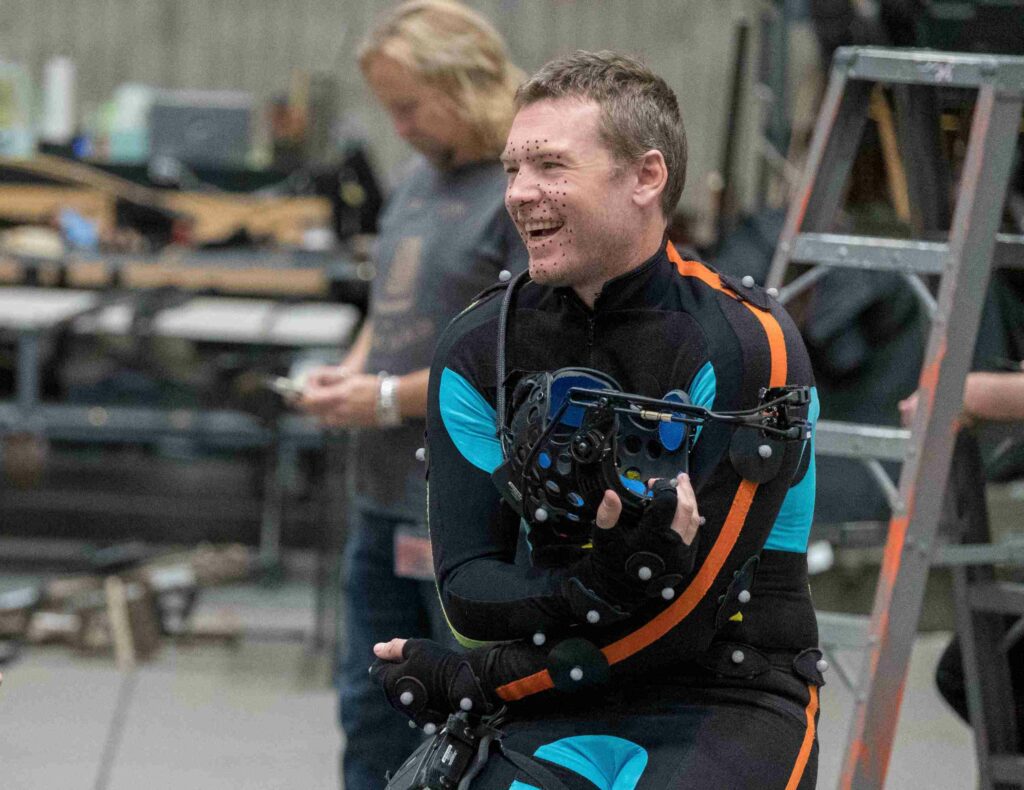
Forever trying to waft away bubbles is a thankless task, and there has to be scuba in the tank. CCR? “I turned up with my rebreathers, expecting that maybe the DoPs or some of the key divers who had to spend a lot of time under water could use them,” says Garvin.
But in the event it was renowned freediving instructor Kirk Krack who cracked the problem. “He did such a good job in training not only the cast but the crew in technical freediving breath-holds that we ended up not needing the rebreathers at all. And even the crew were able to do prolonged working two-and-a-half or three-minute breath-holds and move under water with no bubbles.”
So what about the open-circuit divers? “At any given time about half the divers would be on scuba, but the secret is that when action was called and motion-capture taking place, those scuba divers had to migrate out of the volume so that their bubbles weren’t tracking.
“And they had to break the golden rule and hold their breath on scuba! So during the two-and-a-half or three-minute take, they would effectively be breath-holding as well. Only when ‘cut’ was called could they exhale.”
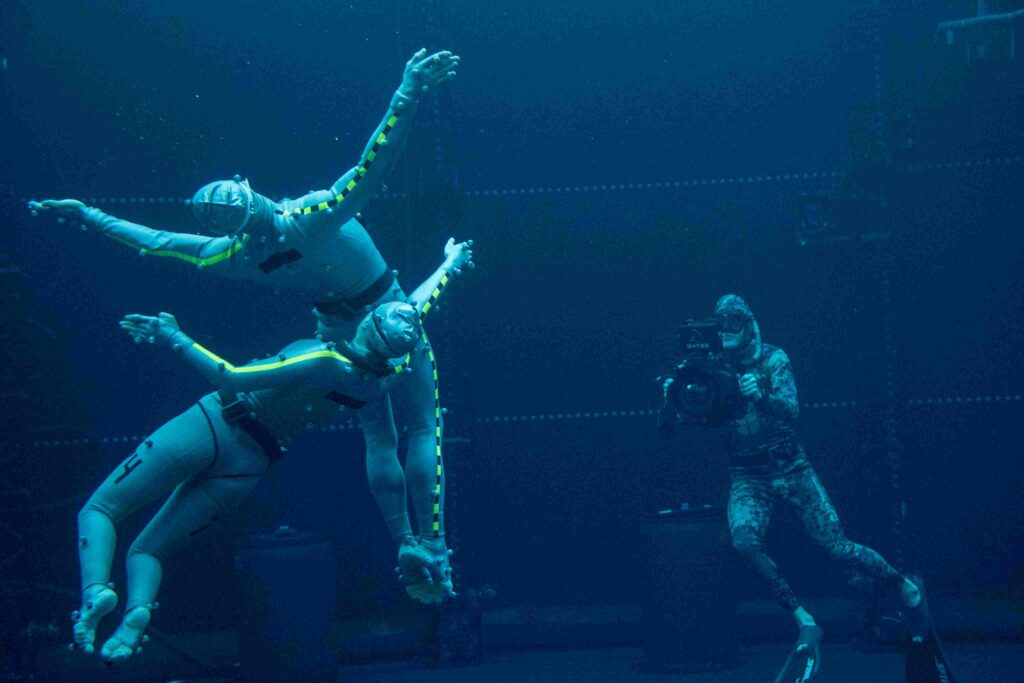
Safety culture
The buddy system came to the fore right from the preliminary training, with everybody encouraged to take responsibility not only for their own but for the safety of others.
“You have some of the best divers in the world in the water along with people who have never dived before,” says Garvin. “On a huge project like this, the only way to manage safety is to drill it into everybody both above and below the water, as a culture.
“Pretty much everybody who was trained in freediving or scuba was also trained to recognise if somebody was having a problem and to effectively do the rescue. There were extremely experienced scuba and freediving instructors whose principal job was to manage safety in the water, but if there was going to be a hypoxic incident the person doing a scene might be closest to the person having the problem, so it made sense that they would be trained to get them to the surface if necessary.”
Even the reference-camera team, who never got wet, received breath-hold training. “These were the guys looking through the windows at the side of the tank, but Kirk took the view that they constantly had their cameras on all the actors and crew, so should be trained to recognise symptoms of hypoxia.
“In all six tanks we would take at least a couple of days before we started filming for everybody in the dive team to practise emergency drills.
“We’d say right, it’s a new tank, a new team, what happens if we have an unconscious scuba diver at the bottom of the tank, how do we get him up? How do we get him out of the water? What happens if we have shallow-water hypoxic black-out from a freediver? What happens if we have a spinal injury? We’d go through all these scenarios, involve the medical team on the film-set and often invite local paramedics in as well.”
By using technical nitrox – employing 50% and 80% nitrox for the pre-breathes and recovery breathing after dives – the risk of shallow-water black-outs was eliminated, says Garvin. “Though before everybody goes rushing out and doing freedives on 50% and 80%, we were able to do that only because of the shallow nature of our dives in the tanks.”

The six tanks in Los Angeles and New Zealand were enormous but mostly no more than 6m deep (though the biggest in LA, measuring 40m by 20m, had a 10m deep end). “Six metres was just a very comfortable depth. It didn’t allow a lot of travel-time to get the actors down and back to the surface and, certainly for those long shoot days, where sometimes we’d be spending 12 hours-plus in the water, that was so important in helping to manage fatigue.”
Acting under water
How did the actors, ranging in age from seven to septuagenarian, take to their underwater world?
“Some had already done formal scuba training, some had just tried resort dive courses, but most had never dived before, so the process was to take them all through scuba training, or certainly refreshers. Then they would start their freediver training.
“During each take under water they would regularly have to go to scuba and use a combination of the two disciplines, but actors are very, very good at retaining information. I’ve always found them to be the perfect scuba students. You can give them a complicated dive briefing and they follow it to the book, because following instruction is what they do for their living.”
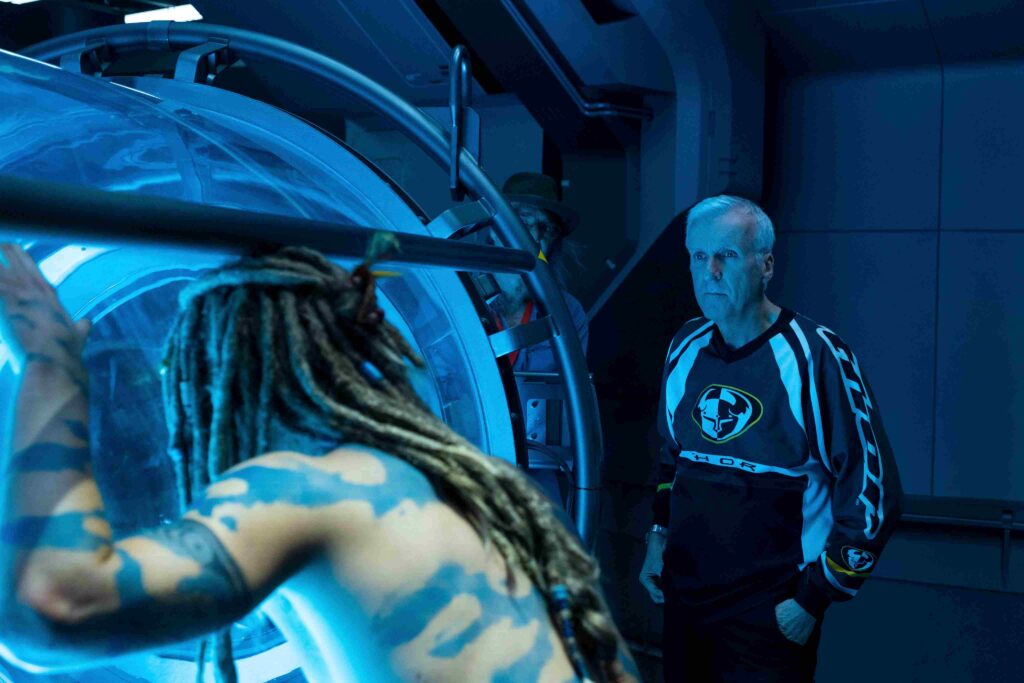
John believes all the actors enjoyed their underwater challenges – and in some cases went beyond the call of duty. “Some of them loved it so much that they went on to get their full scuba certification. They would sometimes turn up on their days off or during lunchtimes, just to get more time in the water.
“It wasn’t uncommon to get an actor volunteer to dive in to give a hand in vacuuming the sediment out of the tank, which we’d do at 6 each morning. For some, that was a perfect way to have an hour’s peace and quiet away from mobile phones or people bothering them!”
Cameron had set Garvin and Krack a goal at the start of the project: a good working breath-hold of two minutes for every actor. “The last thing Jim wanted was to have everything set up, everybody goes under water, he calls action and the actor is out of breath, has to come straight back up and we’ve captured nothing.”
Through the use of technical nitrox he says that most of the actors mastered working breath-holds of two-and-a-half, and some three-and-a-half, minutes – and all freedivers will recognise that breath-holding while working is a very different proposition to static apnea at the poolside.
There was quite a bit of publicity during the making of Avatar: The Way Of Water around the prodigious breath-holds of some of the female stars. Without wanting to under-rate their achievements, I had assumed that these had been assisted by 100% oxygen (the world record on O2 is around 24 minutes).

“Kate Winslet I think had the record of just over seven minutes [7min 14sec, in fact] and Sigourney Weaver managed a six-and-a-half minute breath-hold,” says Garvin. “I believe this was on 50%, because we only used the 80% for the very high-intensity energetic shots such as fight sequences. Even so, even on air during training Kate and Sigourney were up in the five-minute range, and very comfortable doing that.”
Cameron was impressed too. “I’ve been a freediver for 50 years, and I think the longest I’ve ever held my breath was five and a half minutes,” he has said.
Dry for wet
But there is a lot more to acting while submerged than being a crack apneist. “The real secret was not just to get them to hold their breath but to do so in such a way that their performance could suggest that they were water-born,” says Garvin. “The Metkayina water tribe are very loosely based on those Pacific-island cultures that embrace underwater hunting, fishing and navigation.
“We’ve all seen movies where actors are under water and you can tell they’re not digging it – they have the hamster cheeks and eyes the size of saucers. OK, sometimes they’re not supposed to look comfortable, but we were trying to create this wonderful, relaxed facial and body movement.”
Which brings us back to why Cameron was willing to take on the challenges of underwater motion-capture, as opposed to the time-honoured and easier “dry for wet” approach. The original Avatar was praised for having elevated motion-capture into “performance-capture”, but underwater visual effects were another matter.

Cameron has said of Avatar: The Way Of Water: “We were doing water simulations back on Titanic, but it’s taking it not just to the next level, but up five levels. The beauty of it is, if you can solve water for this movie, you can do all water any time until the end of time. So these tools become incredibly important for the effects industry at large.”
“Dry for wet is traditionally where you’re on a dry sound-stage with a green screen behind you,” says Garvin. “The actor is put in a stunt harness and manipulated through the air, then later bubbles are added, and wavy hair.
“We’ve all seen examples of that, but anybody who has ever spent time in water, especially divers who have done drift-dives in fast currents, or piloted a DPV, will tell you that water dictates movement. The water creates ripples in the muscles, contortions in the face – you can’t do anything without water becoming a part of it.
“So a diver watching ‘dry for wet’ knows instantly that it’s wrong, and I think even a non-diver has the sense that something’s not quite right.”
That feeling can be enough to sever emotional connections with the character and story, he says. “Of course, James Cameron is a diver himself. He understands how water dictates movement, which is why everything you see under water in Pandora in the film was really shot under water.”
Different hats
John Garvin has been the go-to diver working on underwater projects with Cameron for many years now. The first was the cave-diving thriller Sanctum (which he co-wrote and acted in) and notably he ran the underwater safety for Cameron’s solo descent into the Marianas Trench which became the movie Deepsea Challenge.
“My role on Avatar: The Way Of Water was to write the book on safety, create risk-management protocols and see how we would design the tanks to function as a working system, but I had a number of different hats as well,” he says. One he relished was “where you get to pretend you’re Q from the James Bond series and build this kinda cool equipment, hand it over to the actors and train them to use it.”
Particularly satisfying was the design of a full-face dive-mask for the human character Spider, which he worked on with props companies Weta Workshop and Design In Industry. “How do you make a full-face mask that can be dived by an 8/9-year-old child and also by an adult actor and not cause any distortions or refractions, can give a full-face performance but be extremely breathable and manage CO2, and also have light and sound and everything all done right?
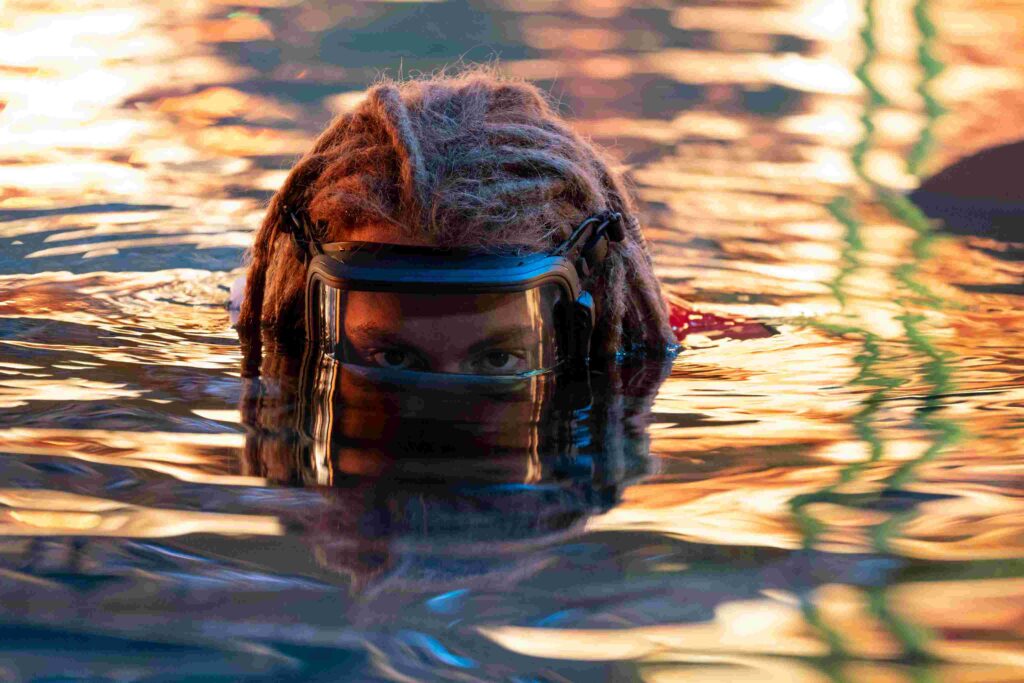
“We ended up with a product everybody loved, that everybody was asking to try, so I was proud of the work that went into the Spider mask.
“But we didn’t work in a bubble, we also brought in the big guns from the diving industry.” Familiar names that contributed their expertise and products included the UK’s Ambient Pressure Diving, Dive Rite and Hollis, as well as propulsion systems brands Scubajet and Seabob.
Developing underwater communications systems was another vital area. “As with any dive operation you plan the dive and dive the plan, but on a film-set the plan can change five minutes later. So you have to very quickly communicate in particular the safety aspects of that change to the team that’s under water.
“Ocean Technology Systems designed a great underwater hydrophone system with multiple hydrophones so that Jim’s voice could be communicated to the actors on a push-to-talk system, and various departments had their own comms systems.”
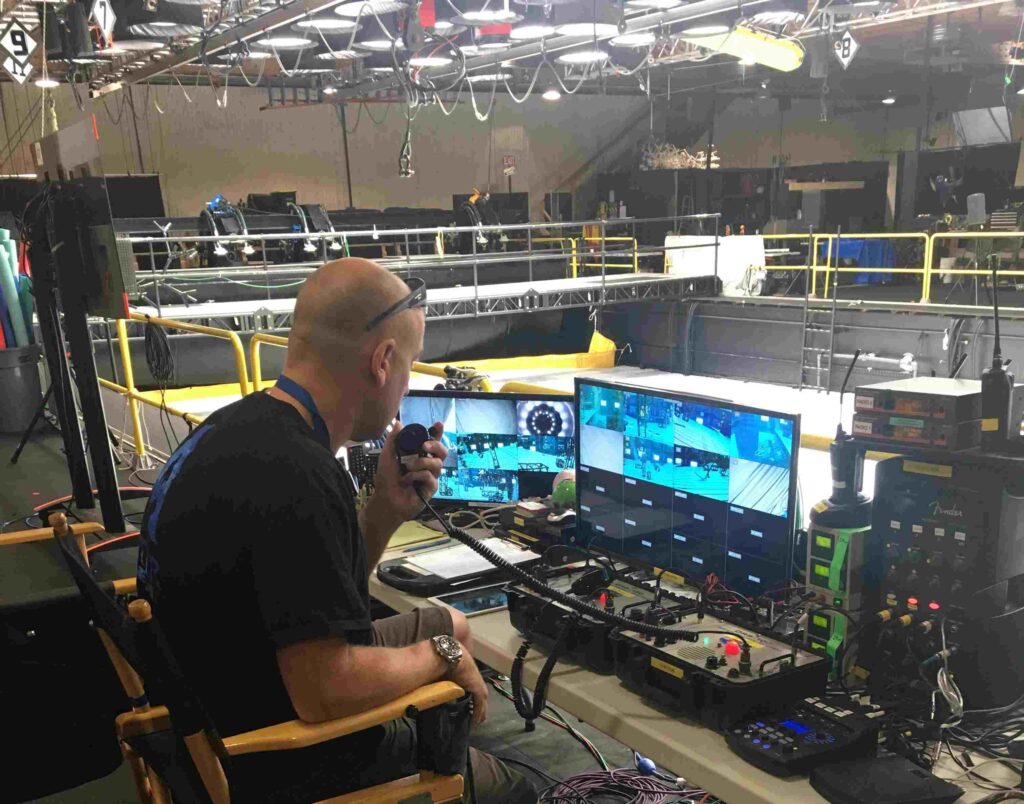
Garvin’s role was full-on as the expected initial 9-12 months shooting the motion-capture in the States turned into two years. “Although my family did come out to join me in LA for a portion of the filming time, that was difficult. Then we had two years in New Zealand shooting the live action, with the actors in costume under water, but that was a short hop from where I live in Australia, so much more manageable.”
Most of Avatar 3 (working title The Seed Bearer) was filmed back-to-back with 2 and is already in the bag, says Garvin. A certain amount of content for 4 (The Tulkun Rider) has been shot too.
“It’s been a huge chunk of my life, and I sincerely hope that the film resonates with everyone who has a love of the ocean, and in particular divers, who I think will be uniquely placed to appreciate some of the challenges we faced under water.”
If it does resonate, meaning that Avatar 4 and 5 are green-lit, will he be involved? “Without giving too much away, I think the second film probably has the heaviest element of water but I would imagine that water will be featured in the further sequels. I’m not sure in what capacity I would be involved. Jim is always pushing the envelope so there will be a whole sequence of fresh new challenges to face if the other films are made.
“Everything we see on screen is inspired by our own oceans, and Jim’s background as a diver has filtered into the incredible underwater creatures and sequences and vistas. This is really James Cameron’s love-letter to the ocean, at what I think is a pivotal moment for the scuba industry, after a very challenging few years.”
Cinematic inspirations
Garvin believes strongly in the entertainment industry’s power to inspire younger audiences. “I think most divers will agree that in the early days of scuba, series like Sea Hunt and The Silent World encouraged a whole generation to dive. And later Thunderball and The Deep encouraged the next generation.”
The movie that tripped Garvin’s youthful switch was The Abyss – directed, of course, by James Cameron. “I remember watching it when I was at university. I went out and blew my whole grant cheque on secondhand scuba equipment and had to live on baked beans for 12 weeks.
“For me it was a call to arms – I didn’t fully understand diving but I just knew I wanted to be a part of this incredible world of underwater technology. So I’m really hoping that Avatar: The Way of Water will be a key landmark to get a whole new generation of ocean explorers interested in the sport.”
Generation Z might well have been inspired by Avatar, but how will grown-up Zoomers and Generation Alpha respond to the watery sequel? In Australia Avatar has just been re-released in cinemas, so Garvin took his 11-year-old son Ben, who recently started learning to scuba dive, to enjoy the 3D experience.
“The cinema was full of dads and mums doing exactly what I was doing. They loved the first film so much they wanted to share that with the little ones on a big screen, and show how different it was from streaming on Disney.
“I spent most of the time looking around the cinema, seeing the reactions and listening to the gasps, and the buzz afterwards was incredible. I wasn’t really expecting that from a movie that’s 12 years old. It was joyous – there’s nothing quite like watching a film on a big screen with hundreds of other people and leaving your own world for a few hours.”

Garvin has tried to keep up his own recreational diving – “all work and no play is never a good thing”– but might have a little more time now. “I’m very much looking forward to getting into diving with my son and seeing it all again through his eyes, revisiting some of the incredible places I’ve been fortunate enough to dive over the years.” That means Galapagos – “nature on steroids” – Turks & Caicos, where he ran a dive-centre for 10 years and, right on his doorstep, the Great Barrier Reef.
As for personal projects: “I’ve still got a few water-based scripts I’m working on and there’s another big feature film with a heavy diving element on which I’m helping out, so I’m keeping busy.”
Back to BSAC
Ultimately the mark of Garvin’s success on Avatar: The Way Of Water is that “as far as incidents were concerned, safety was pretty impeccable. You can’t do that many dives without having a few little near-misses, but nothing vaguely life-threatening took place. We were effectively helping to manage the risk in the certainty that many accidents would get nipped in the bud before they developed into incidents.
“I’m so grateful that I learnt to dive in England through BSAC, with that culture of mentoring. I remember in the very early lectures being taught about ‘the Incident Pit’ and how it’s not down to one thing but an accumulation. I couldn’t have had a better education for dealing with huge, complex projects like this or the Deepsea Challenge.
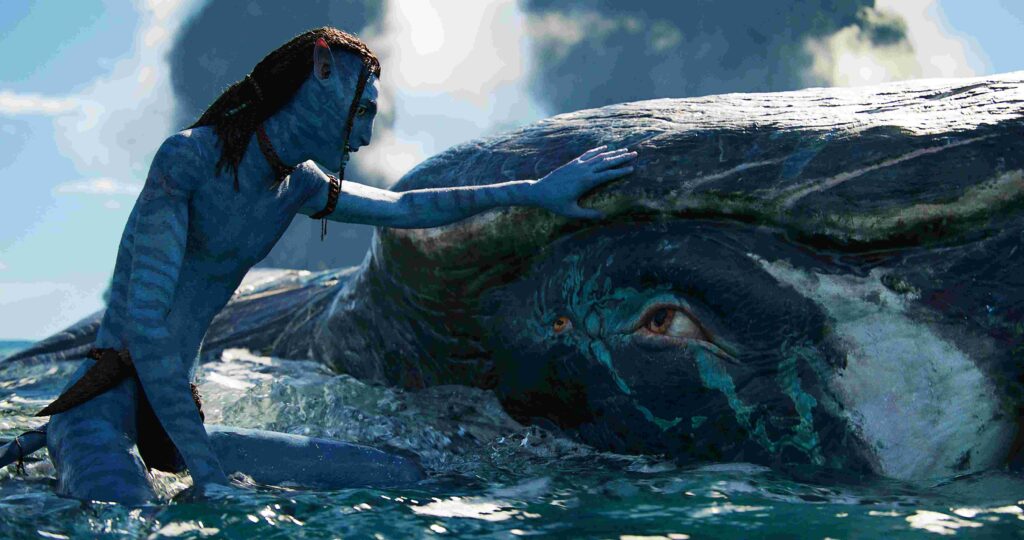

“You can’t do this kind of thing by going from beginner-diver to instructor in six months – it’s slow-burn. It’s years and years of just diving with divers who’ve been doing it for so long and can pass on all that information, and not just on the diving side but compressors, tanks, regulators, how to service stuff. I’m very blessed to have learnt to dive in that kind of club environment in the UK.”
Early verdicts from movie critics who have seen previews of the three-hour final cut of Avatar: The Way Of Water seem polarised between the cynical and the wowed. John Garvin, as you might expect after his four-year full immersion, has no doubts at all: “It is absolutely breath-taking, but It’s not something you really want to watch at home, streaming – it needs to be seen in 3D on a big screen.
“If, as a diver, you want to take your family on the best scuba dive, get them into the cinema at Christmas and give them a tour of underwater Pandora!”
Avatar: The Way Of Water opens in cinemas today (16 December).
Also on Divernet: Kate Winslet: Breath-Holding For Britain. And find Avatar: The Way Of Water Q&As with John Garvin and Kirk Krack in Scuba Diver


lovely story thank you Steve
Amazing story! Fun to read about the process.